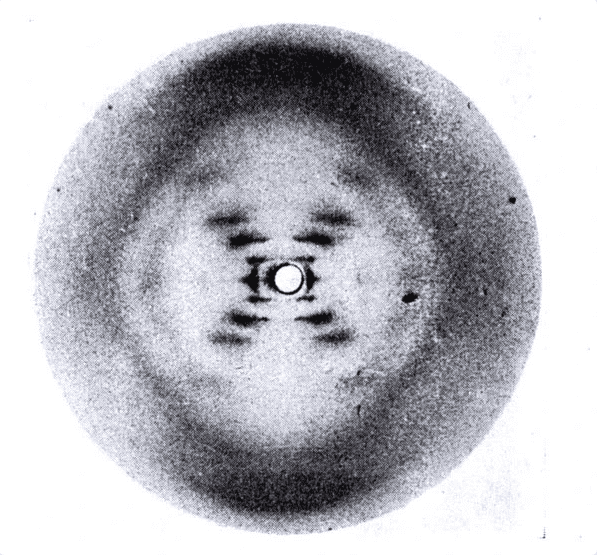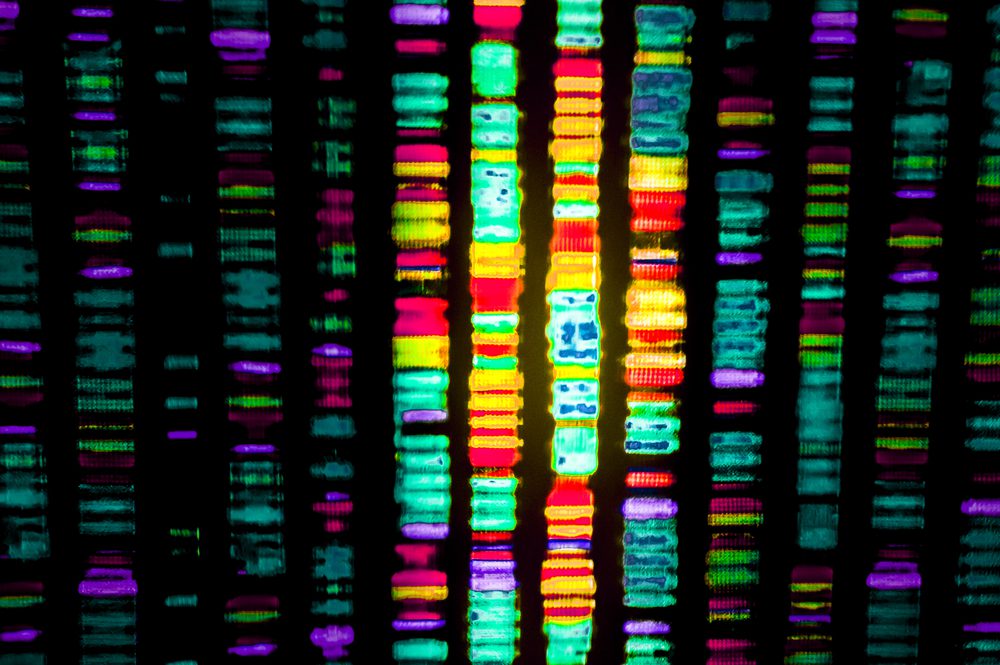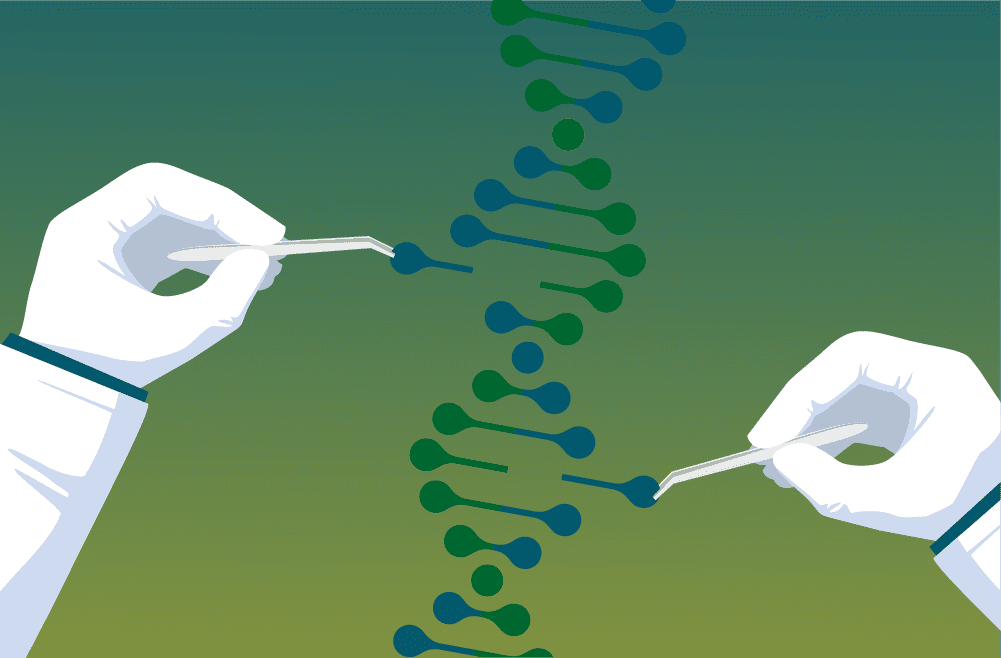DNA and the Human Genome
Top Milestones in Human Genetics and Genomics Over 75 years (1948-2023)
The successful completion of the Human Genome Project would not have been possible without the many discoveries that preceded it. From understanding the double helix structure of DNA, learning how to sequence the nucleotides that make up DNA, to developing the tools needed for research, progress in genetics has been incremental, a step-by-step process that continues to evolve.

Photo 51, by Rosalind Franklin
1950s
The discovery of the double helix structure of DNA, the spatial organization of its four component molecules, or nucleotides—adenine (A), guanine (G), cytosine (C), and thymine (T), marked the first step in understanding the similarities and differences among humans. Learn more in ASHG’s “Building Blocks of Genetic Code” web page and animated video. The long strands of DNA are tightly wound into 46 chromosomes in humans, and small segments along the double strand of DNA encode genes that codify proteins to perform biological functions. These discoveries were made in this decade.
Late 1970s
The ability to manipulate DNA emerged with the discovery of recombinant DNA approaches, which enabled scientists to split DNA into smaller segments and then insert them into a virus or bacteria to copy and study it in more detail. This technique has been used for many life-saving therapies, including synthesizing insulin and developing certain vaccines.
Source: When was recombinant DNA technology invented? | Britannica
1977
Sanger sequencing led to the systematic analysis of the sequence of nucleotides that make up DNA molecules, including the first genome, which was of a bacterial virus. This approach paved the way for other sequencing methods and the eventual development of next-generation sequencing technologies.
Overview of Next Generation Sequencing Technologies - PMC (nih.gov)
Mid-1980s
Early attempts to map the genome focused on DNA markers, specific sequences linked to a location on a chromosome. This development enabled thousands of diseases to be mapped to specific locations in the genome through linkage studies.
The establishment of the Bermuda Principles as part of the Human Genome Project laid out the ground rules for worldwide data sharing of genomic information. These principles were a way to expedite progress in research and disseminate information to the public promptly.
Source: Gonzaga-Jauregui, Claudia. “The Human Genome.” In Brenner’s Encyclopedia of Genetics, 3rd Edition.

DNA Sequencing
1990-2003
During this period, the Human Genome Project (HGP), or the mapping and sequencing of the human genome, was completed. The first draft of the human genome reference sequence was released in 2001, and two years later, in 2003, the finished draft was published. Since then, the human genome reference sequence has undergone numerous revisions and improvements, serving as a major resource for biomedical research.
Source: Gonzaga-Jauregui, Claudia. “The Human Genome.” In Brenner’s Encyclopedia of Genetics, 3rd Edition.
2005
Next-generation sequencing moved beyond Sanger sequencing, enabling whole genomes or targeted areas, such as the exome, which comprises all protein-coding genes in the genome, to be sequenced at high throughput speeds and reduced costs. The ability to gather this information from many people has revolutionized the study of human variation and diseases and has led to the sequencing of cancer samples and identifying the causes of genetic disorders.
Next Generation Sequencing - an overview | ScienceDirect Topics

Cartoon depiction of CRISPR
2012
The discovery of the CRISPR/Cas system, a basic biology discovery that has been harnessed as a powerful technology, opened the door to gene editing, enabling researchers to delete, add, or change specific segments of DNA. This tool is being used to study how changes in DNA can cause diseases, analyze the relationship between genes and the onset of diseases, such as cancer and rare diseases, as well as to develop novel gene therapy approaches.
Sources: What are genome editing and CRISPR-Cas9?: MedlinePlus Genetics; How is Genome Editing Used?
2020
Although the human genome has been revised extensively since 2001, gaps within chromosomes persisted. The successful completion of a telomere-to-telomere, or end-to-end, assembly of a human genome, is the most continuous, gapless model built to date, adding information on previously uncharacterized regions of the genome.
Source: The complete sequence of a human genome - PubMed (nih.gov)
